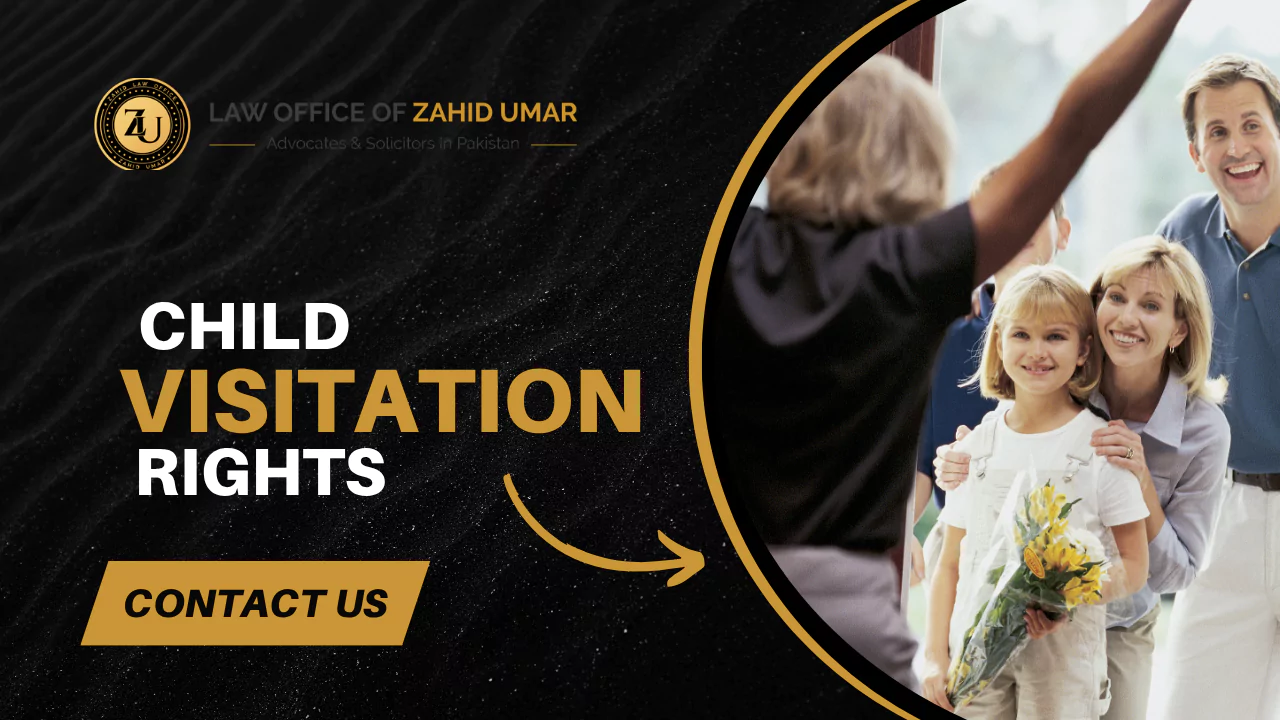Child Visitation Rights in Pakistan
In Pakistan, when parents separate or get divorced, figuring out child visitation rights can be really tough. Both parents usually want to stay involved in their child’s life, but sometimes the court has to decide how the child will spend time with each parent. As a family lawyer in Lahore, I’m here to help families understand their rights and guide them through the legal process of child visitation. In this blog, we’ll break down what child visitation rights are, what affects these decisions, and how you can deal with visitation issues in Pakistan.
What Are Child Visitation Rights?
Child visitation rights mean that a parent has the legal right to spend time with their child after they’ve separated or divorced. Typically, when one parent has primary child custody, the other parent gets visitation rights to see the child on certain days.
Factors Affecting Child Visitation Rights in Pakistan
When deciding on visitation rights, the court looks at many things to make sure the child is safe and well cared for. Here are some important factors the court considers:
1. The Childs Best Interests
The court’s main focus is always the welfare and best interests of the child. This means making sure the child is physically and emotionally safe and healthy. The court looks at which parent can provide the most stable and supportive environment for the child upbringing.
2. The Child’s Age and Gender
Sometimes, the child’s age and gender can play a role in visitation decisions. For example, younger children may spend more time with the mother, while older kids may have a say in who they want to live with and how they want to spend time with each parent.
3. Parental Behavior
The court looks at the behavior of both parents. If there’s any history of abuse, neglect, or violence, it could affect visitation. A parent with a history of abuse might be denied visitation or have supervised visits to keep the child safe.
4. Parent-Child Relationship
The court also checks how strong the bond is between the child and each parent. If one parent has a close relationship with the child, the court will try to keep that bond intact during the visitation process.
5. Parental agreement to share custody
If both parents are willing to work together for the child’s well-being, the court is more likely to allow a more flexible visitation arrangement. If one parent is being difficult or refuses to cooperate, it might influence the court’s decision.
Types of Child Visitation Arrangements
In Pakistan, the court can choose different types of visitation based on the situation. These include:
1. Fixed Visitation Schedule
This means the court sets specific days and times for the parent without custody to visit the child. For example, the child may visit the non-custodial parent every weekend or during school holidays, summer vacations, winter vacations, on special occasions like Eid, Birthday etc.
2. Flexible Visitation
Sometimes, the court allows a more flexible schedule, where the parents agree on when the child will visit. This usually works if both parents get along and cooperate.
3. Supervised Visitation
If one parent has a history of abuse or other concerns, the court may order supervised visitation. This means a third person, like a social worker, will be present during the visits to make sure the child is safe.
4. Virtual Visitation
When the non-custodial parent lives far away, the court might allow virtual visitation. This means the parent can stay in touch with the child through video calls or using electronic means like WhatsApp, Skype, emo or other online ways.
How to File for Child Visitation Rights in Pakistan
If you’re a parent seeking visitation rights, here’s what you need to do:
1. File a Petition in Guardian Court
To ask for visitation, you’ll need to file a petition in Guardian Family Court specially established to encounter the child welfare and see best interest of child. In your petition, explain why your visitation is best for the child, including how often you want to see the child.
2. Provide Evidence
You may need to give evidence to support your request through proper petition. This could include showing that you have a good relationship with the child or explaining why visitation would be good for the child.
3. Court Hearing
After filing your petition, the court will schedule a hearing. Both parents will get a chance to present their side. The court may also suggest mediation to help both parents come to an agreement.
4. Court Decision
Once the court hears both sides, they will make a decision about visitation rights. If both parents can’t agree, the court will decide the terms for visitation.
Can Visitation Rights Be Changed?
Yes, visitation rights can be changed. If something significant changes, like one parent moving to another city, you can file a petition to change the visitation arrangement.
What to Do if Visitation is Denied?
If the custodial parent refuses visitation, you can file a contempt of court petition. The court can take action against the parent who is not following the visitation order and compel the parent to adhear to the visitation schedule through appointing its bailiff or seeking police help to bring children before the guardian court as required under Section 100.

